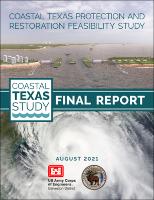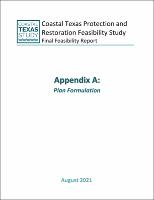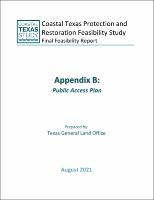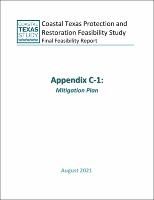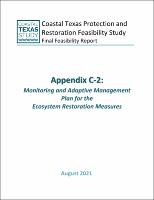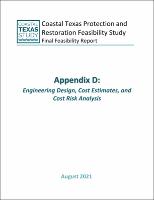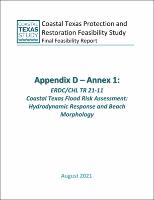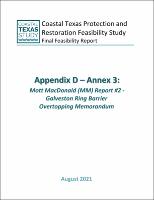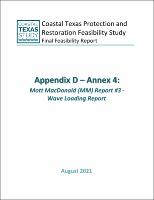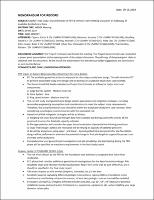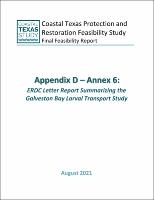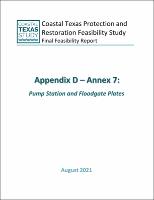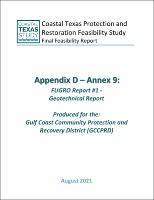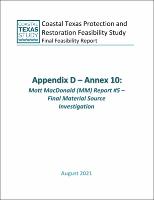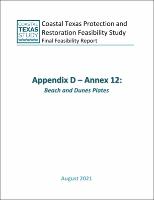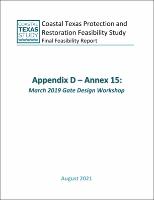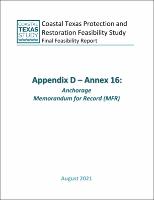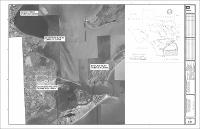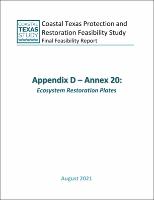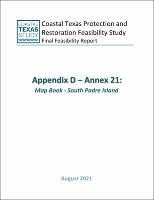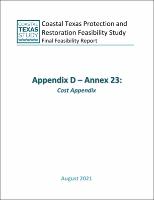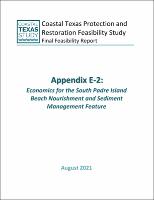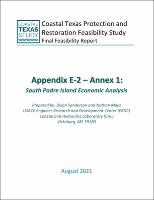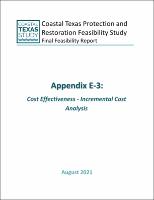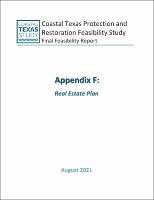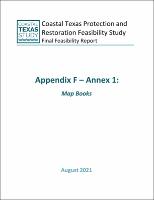Please use this identifier to cite or link to this item:
https://hdl.handle.net/11681/43480| Title: | Coastal Texas Protection and Restoration Feasibility Study : Final Report |
| Authors: | United States. Army. Corps of Engineers. Galveston District Texas. General Land Office |
| Keywords: | Flood control Coasts--Texas Environmental protection Environmental management |
| Publisher: | United States. Army. Corps of Engineers. Galveston District. |
| Abstract: | Along the Texas coast, vital resources critical to the social, economic, and environmental welfare of the nation are at risk. When tropical disturbances negatively impact the man-made and natural environments of the Texas coast, the immediate fallout and the continued aftermath affect not only the people who live in these coastal counties, but also the entire nation. Due to the importance of the Texas coast, the United States Army Corps of Engineers (USACE) has partnered with the State of Texas General Land Office (GLO) to identify and recommend feasible projects to reduce risks to public health and the economy, to restore critical ecosystems, and to advance coastal resiliency. This effort, known as the Coastal Texas Protection and Restoration Feasibility Study (Coastal Texas Study), was initiated in 2014 to evaluate large-scale coastal storm risk management (CSRM) and ecosystem restoration (ER) actions aimed at providing the coastal communities of Texas with multiple lines of defense to reduce impacts from a wide array of coastal hazards. This study falls under the USACE’s Civil Works Mission, which includes but is not limited to inland and coastal flood risk management and the restoration, protection, and management of aquatic ecosystems. This planning effort was conducted in full compliance with the National Environmental Policy Act (NEPA) and this report includes a companion Final Environmental Impact Statement (EIS). This Final Feasibility Report presents the findings and recommendations of this years-long study effort by the USACE and GLO. This report supersedes the previously issued 2018 Draft Integrated Feasibility Report and Environmental Impact Statement (DIFR-EIS) and the October 2020 Draft Feasibility Report and Draft EIS and represents the most current and complete findings of this study effort. |
| Description: | Feasibility Study |
| Rights: | Approved for Public Release; Distribution is Unlimited |
| URI: | https://hdl.handle.net/11681/43480 |
| Appears in Collections: | Environmental Documents |
Files in This Item:
